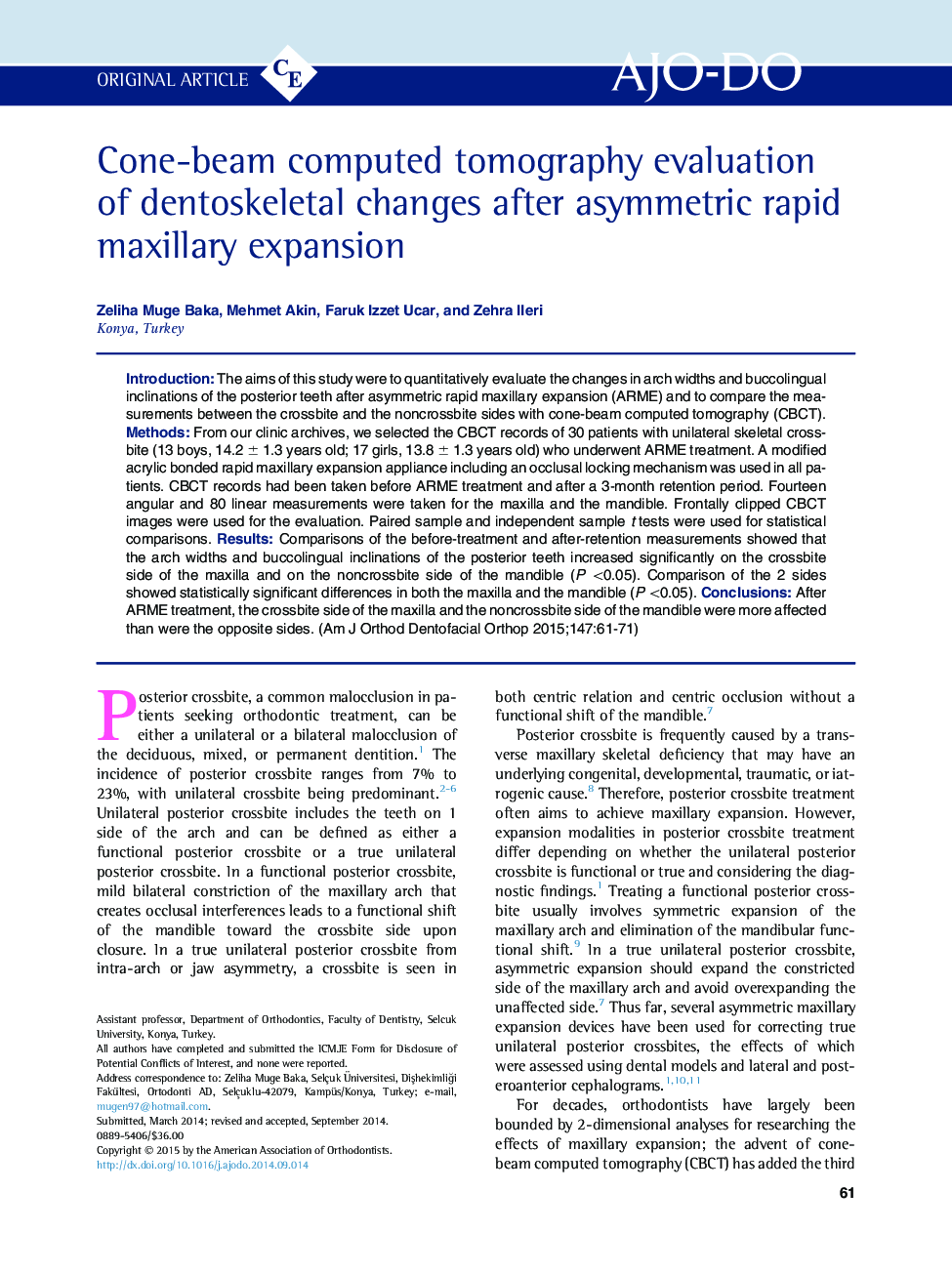| Article ID | Journal | Published Year | Pages | File Type |
|---|---|---|---|---|
| 3116148 | American Journal of Orthodontics and Dentofacial Orthopedics | 2015 | 11 Pages |
•The asymmetric rapid maxillary expansion appliance (ARME) effectively treats true unilateral posterior crossbites.•All maxillary and mandibular arch widths increased after treatment with the ARME.•All maxillary and mandibular posterior teeth tipped buccally after treatment with the ARME.•ARME gave anchorage control on the maxillary noncrossbite side and expansion on the crossbite side.•The noncrossbite side of the mandible was more affected than the opposite side after ARME treatment.
IntroductionThe aims of this study were to quantitatively evaluate the changes in arch widths and buccolingual inclinations of the posterior teeth after asymmetric rapid maxillary expansion (ARME) and to compare the measurements between the crossbite and the noncrossbite sides with cone-beam computed tomography (CBCT).MethodsFrom our clinic archives, we selected the CBCT records of 30 patients with unilateral skeletal crossbite (13 boys, 14.2 ± 1.3 years old; 17 girls, 13.8 ± 1.3 years old) who underwent ARME treatment. A modified acrylic bonded rapid maxillary expansion appliance including an occlusal locking mechanism was used in all patients. CBCT records had been taken before ARME treatment and after a 3-month retention period. Fourteen angular and 80 linear measurements were taken for the maxilla and the mandible. Frontally clipped CBCT images were used for the evaluation. Paired sample and independent sample t tests were used for statistical comparisons.ResultsComparisons of the before-treatment and after-retention measurements showed that the arch widths and buccolingual inclinations of the posterior teeth increased significantly on the crossbite side of the maxilla and on the noncrossbite side of the mandible (P <0.05). Comparison of the 2 sides showed statistically significant differences in both the maxilla and the mandible (P <0.05).ConclusionsAfter ARME treatment, the crossbite side of the maxilla and the noncrossbite side of the mandible were more affected than were the opposite sides.
